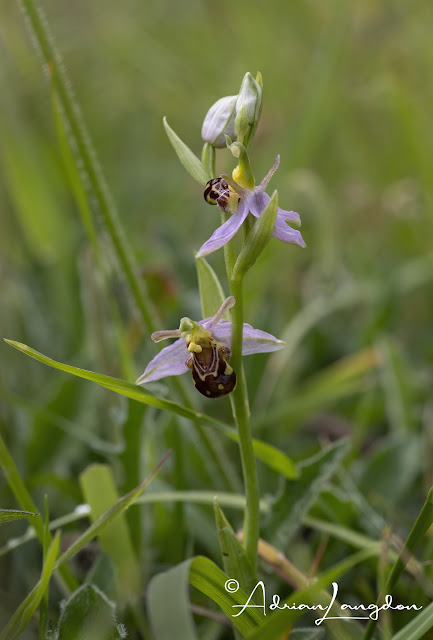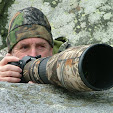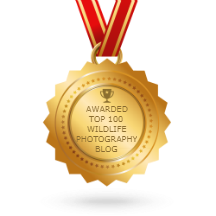A three day tour for Naturetrek taking in the best Somerset has to offer in June.
 | ||
| Bee Orchid |
The Quantock Hills.
We ventured to Hodder’s Combe in the Quantock Hills, a region famous for its ancient oak woodlands. Here, we spotted a variety of birds, including pied flycatchers, lesser spotted woodpeckers, and redstarts. Among the fungi population were striking specimens of Chicken-of-the-Woods.
 | |
| Chicken-of-the-Woods |
One client discovered stoneflies and caddisflies in a stream, highlighting the diversity of aquatic life in the area. We enjoyed lunch at the evocatively named Dead Woman’s Ditch, an historic site thought to be named after a tragic event centuries ago. Moving onward, we took in sweeping views from Black Hill’s trig point, looking across Bridgwater Bay to Wales, with the islands of Flatholm and Steepholm dotting the horizon. Saw Dartford Warblers at this site.
Later, at WWT Steart Marshes on the coast, we observed nesting avocets, oystercatchers, little ringed plovers, and shelducks—an incredible display of wetland wildlife.
 | |
| Nesting Avocet (from my photo library) |
Somerset Levels.
On the 2nd day we paid a visit to RSPB Ham Wall, the flagship reserve of the Somerset Levels, introduced us to a spectacular array of birdlife, including great crested grebes feeding their young, gadwall, pochard, and the unmistakable booming of bitterns. A sky full of swallows, swifts, and sand martins added to the atmosphere.
 |
| Great-crested Grebe with youngster. (from my photo library) |
Polden Hills.
Lunch at Avalon Marshes Tea Hub provided a moment to relax before heading to Ivythorn Hill on the Polden Hills, a National Trust reserve. Here, the wildflowers were in full bloom, featuring five species of orchids—common spotted, pyramidal, common twayblade, greater butterfly, and bee orchids—alongside an abundance of insects, from great-green bush crickets to lacewings and hoverflies.
Collard Hill was our next stop, but the landscape appeared overgrazed compared to previous years. However, the south-facing escarpment still held pockets of floral beauty, offering sweeping views across Sedgemoor’s wetlands.
 |
| Bee Orchid |
 |
| Common spotted Orchid |
 |
| Common Twayblade |
 |
| Greater Butterfly Orchid |
 |
| Scarce Chaser |
 |
| Marbled White |
 |
| Great green Bush Cricket |
The Dramatic Beauty of Cheddar Gorge
On day 3 we ascended to Blackmoor Reserve on the Mendip Hills National Landscape, where we explored remnants of old lead mines and pond ecosystems. The walk through Nether Woods revealed a tapestry of red campion and fluttering insects.
Lunch was enjoyed amidst the towering limestone cliffs of Cheddar Gorge, one of Somerset’s most iconic landmarks. Oliver made an exciting discovery—Cheddar Pinks, a rare flower native to the gorge, prompting a few of us to climb higher for photographs.
 |
| Cheddar Pinks |
We scanned the ponds near Cheddar village in hopes of spotting water voles but were unsuccessful. However, a peaceful hour spent at Cheddar Reservoir was the perfect way to conclude our exploration.
 |
| The Naturetrek Somerset team |





%20(1).JPG)












































































